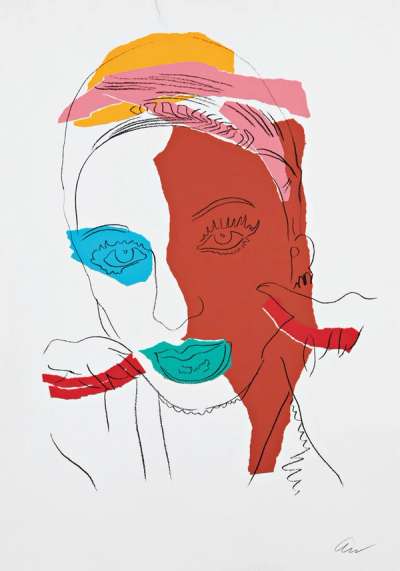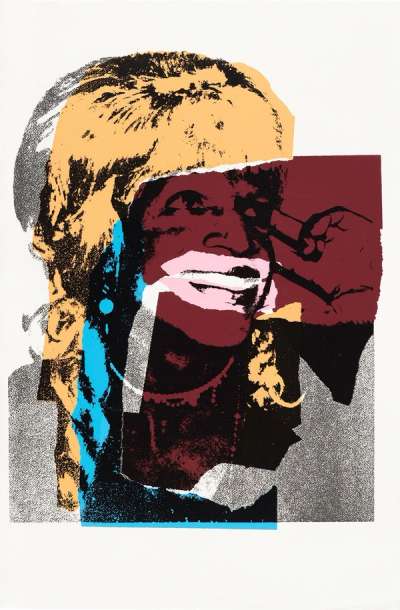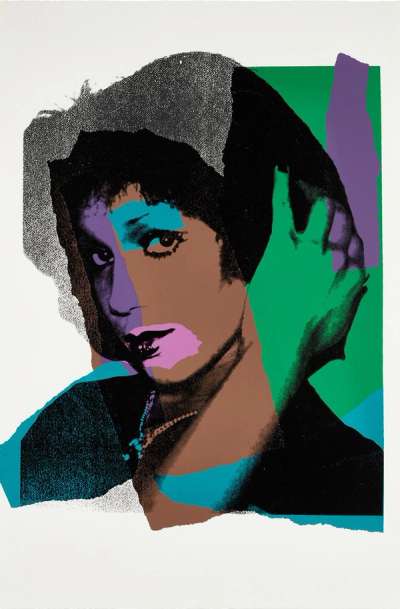
Ladies And Gentlemen (F. & S. II.130)

Ladies And Gentlemen (F. & S. II.130)
Signed Print
Andy Warhol
£8,500-£13,000
$16,000-$25,000 Value Indicator
$14,500-$22,000 Value Indicator
¥80,000-¥120,000 Value Indicator
€10,000-€15,000 Value Indicator
$80,000-$130,000 Value Indicator
¥1,620,000-¥2,470,000 Value Indicator
$10,500-$16,000 Value Indicator
AAGR (5 years) This estimate blends recent public auction records with our own private sale data and network demand.
There aren't enough data points on this work for a comprehensive result. Please speak to a specialist by making an enquiry.
Medium: Screenprint
Edition size: 125
Year: 1975
Size: H 110cm x W 72cm
Signed: Yes
Format: Signed Print
TradingFloor
MyPortfolio
Your collection tracked in real time.
Build your portfolio, manage valuations, view return against your collection and watch works you're looking for.
Track auction value trend
Auction Results
| Auction Date | Auction House | Artwork | Hammer Price | Return to Seller | Buyer Paid |
|---|---|---|---|---|---|
| March 2023 | Rosebery's Fine Art Auctioneers - United Kingdom | Ladies And Gentlemen (F. & S. II.130) - Signed Print | |||
| November 2021 | Palm Beach Modern Auctions - United States | Ladies And Gentlemen (F. & S. II.130) - Signed Print | |||
| October 2021 | Wright - United States | Ladies And Gentlemen (F. & S. II.130) - Signed Print | |||
| May 2021 | Il Ponte Auction House, Via Pontaccio - Italy | Ladies And Gentlemen (F. & S. II.130) - Signed Print | |||
| November 2020 | Forum Auctions London - United Kingdom | Ladies And Gentlemen (F. & S. II.130) - Signed Print | |||
| March 2019 | Sotheby's Online - United Kingdom | Ladies And Gentlemen (F. & S. II.130) - Signed Print | |||
| December 2018 | FauveParis - France | Ladies And Gentlemen (F. & S. II.130) - Signed Print |
Meaning & Analysis
Part of one of Andy Warhol’s largest body of works, the Ladies & Gentlemen series (1975), the screen print Ladies & Gentlemen (F. &. S. II.130) is a portrait of Wilhelmina Ross, a transgender woman and drag performer who featured in 73 of Warhol’s paintings. Taking over 500 Polaroids of his 14 subjects for the series, meant that Warhol could explore the identities of his sitters in an intimate setting. It was widely known that Warhol would sit with the models after a taking their photos to agree on their favourite images.
Given that Warhol was best known for his depictions of world-famous celebrities like Marilyn Monroe, Elvis Presley and Elizabeth Taylor, the anonymity of the subjects in Ladies & Gentlemen makes a departure from his earlier works. Though there has been a renewed interest in the identity of the sitters, most remained unknown until 2014 when their names were published by the Warhol Foundation. Warhol was fascinated by the mechanism of fame, but he was also interested in the way that identity can be performed through images. Working with sitters who were transgender, drag queens, and gender non-conforming afforded him the opportunity to explore the complexities of identity and gender.
Warhol’s portrait of Ross exudes glamour and femininity, showing her wearing a very large hat coloured with pink hues. She looks upwards to the viewer with an open gaze and her lips pronounced. By enlarging these portraits and bringing them into the realm of fine art, Warhol challenges traditional notions of beauty and gender, showing that everyone can be beautiful.










